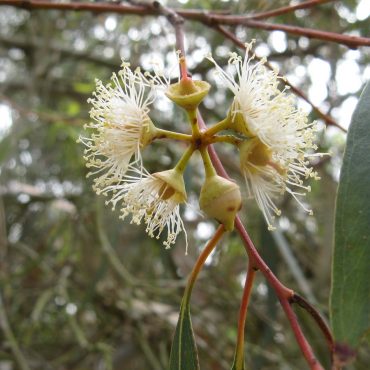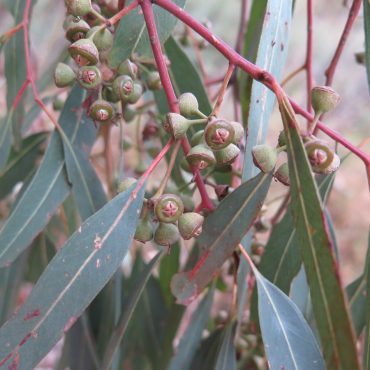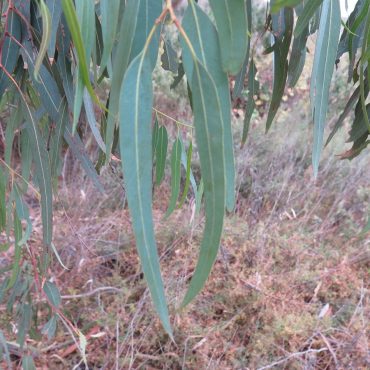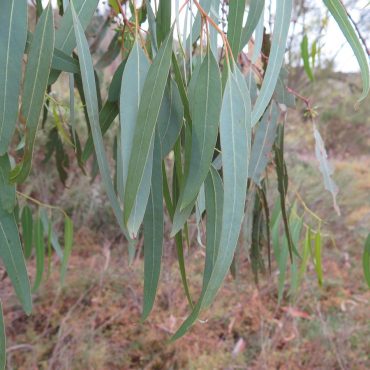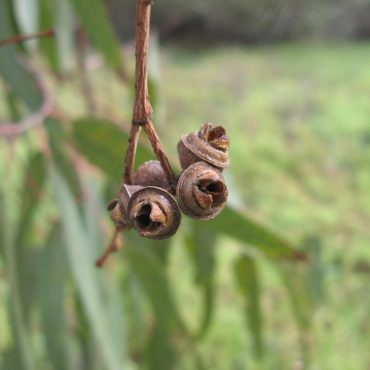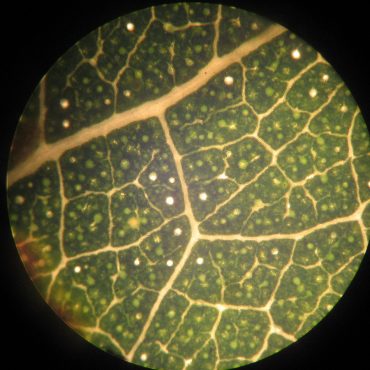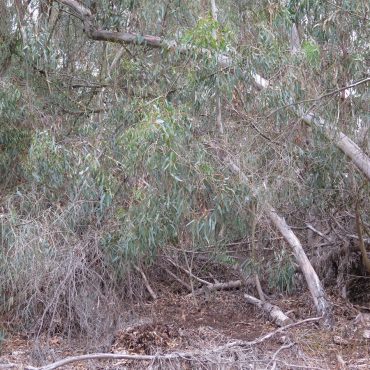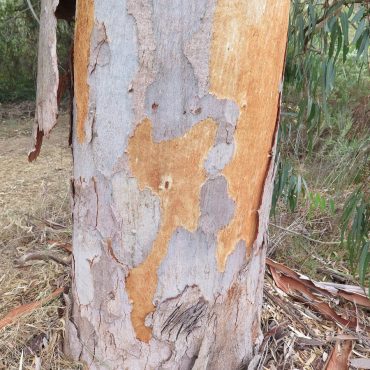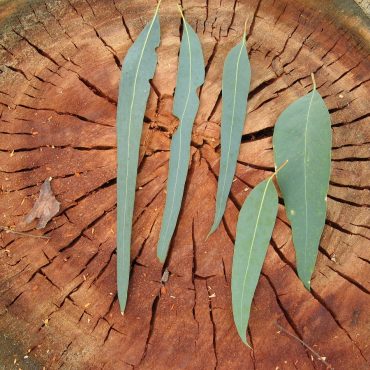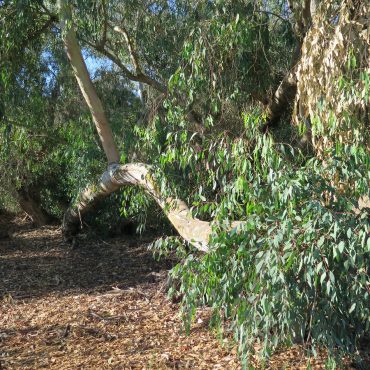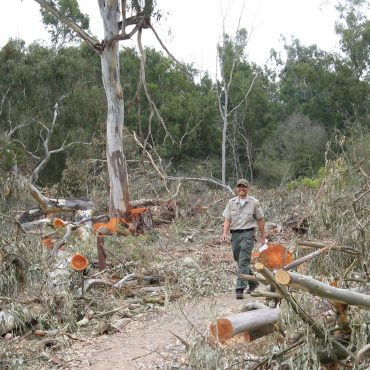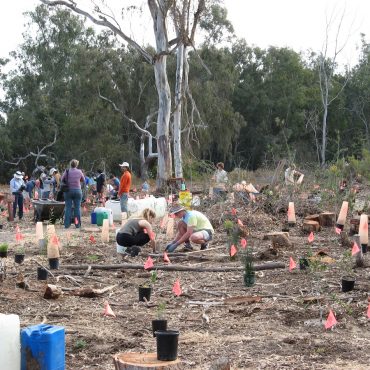“…no tree is more beautiful in the wind or against the sky, and none provides better nesting
for the soft-voiced mourning dove…”
Lawrence Clark Powell (speaking at Mills College, 1956)
“I can’t be expected to produce deathless prose in an atmosphere of gloom and eucalyptus.”
Gerald Durrell, (My Family and Other Animals, 1956)
Few plants are as controversial as a Eucalyptus. It has been called “miracle tree” and “noxious weed.” Red gum (Eucalyptus camaldulensis) is one of many species of eucalyptus, or eucalypts, that were introduced into California for wood, shelter, landscaping and for their presumed curative powers. It is one of a few species have escaped into natural areas where they displace native species and create a fire hazard. In San Elijo they are in conflict with our goals as an an ecological reserve and are unwelcome.
Over the years, red gums in the Reserve have grown and fallen and reseeded. They are invading our elfin forest on the southwest and our marsh on the north. Last month (October 2017) a program was initiated to remove these red gums and replace them with oaks, and riparian trees such as cottonwoods, sycamores and willows. The immediate effect is not pretty, but restoration plans are well underway and in a few years we will have a healthy and diverse association of native riparian plants blending natural marsh and upland oaks.


